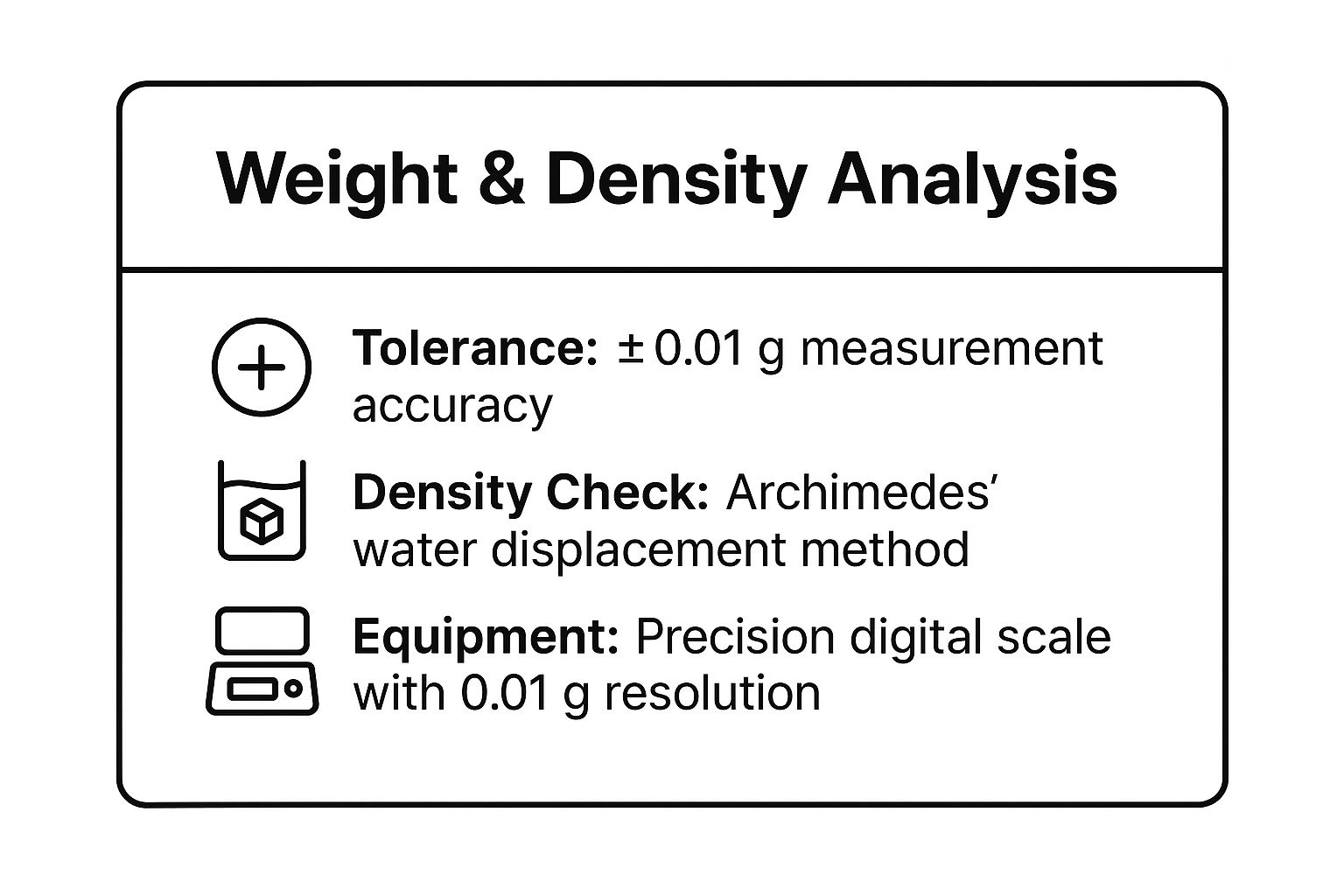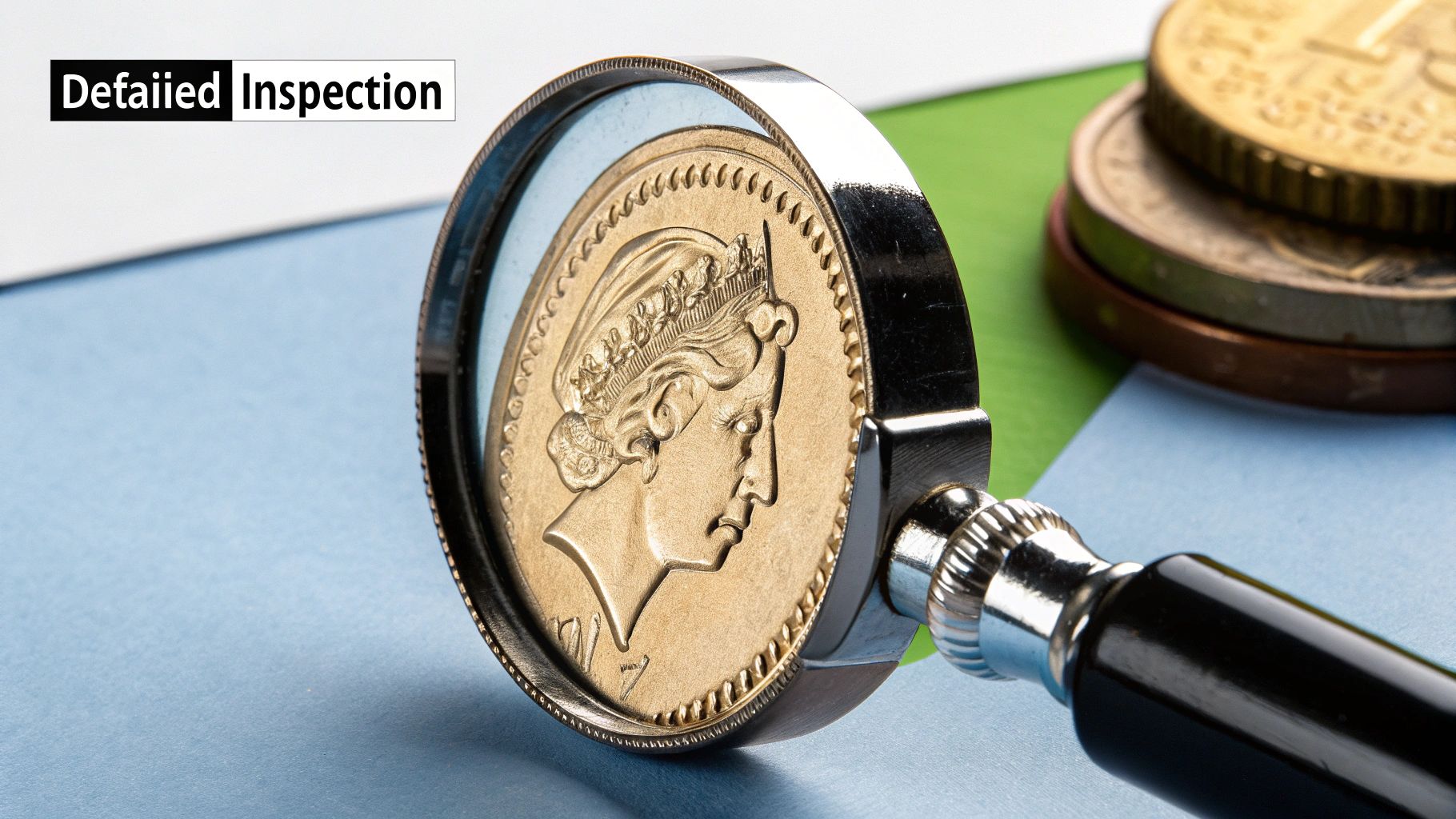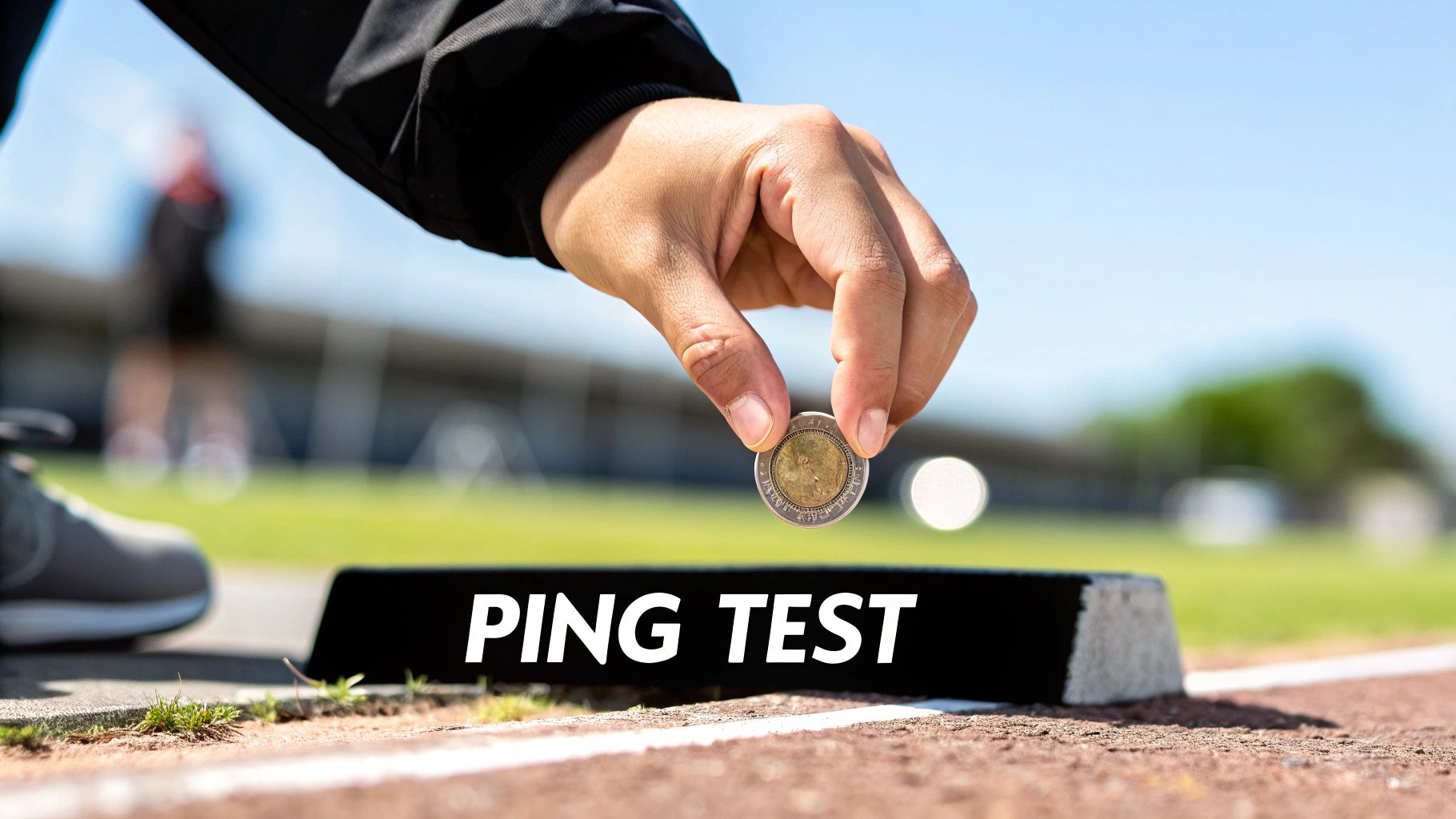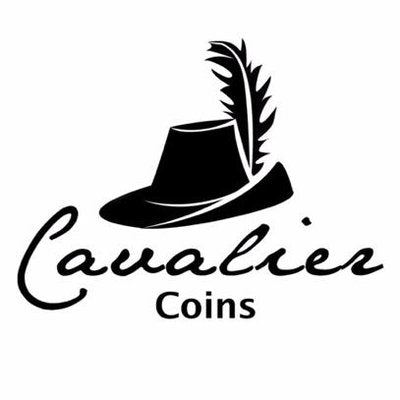Protect Your Collection: An Essential Guide to Authenticity
In the world of numismatics, the thrill of the find is matched only by the importance of authenticity. Whether you are a seasoned collector protecting a valuable portfolio or a newcomer starting your journey, the ability to distinguish a genuine treasure from a clever fake is an indispensable skill. The market for fraudulent currency is more sophisticated than ever, utilising advanced techniques that can deceive even experienced eyes. Therefore, arming yourself with reliable knowledge for detecting counterfeit coins is not just advisable; it's essential for safeguarding your investments and preserving the integrity of your collection.
This guide moves beyond generic advice to provide a detailed, actionable overview of the most effective verification methods available today. We will walk you through seven proven techniques, ranging from fundamental at-home checks like weight analysis and acoustic tests to advanced technological assessments using X-ray fluorescence. Each section is designed to provide you with the practical steps and specific insights needed to scrutinise your coins with confidence. By mastering these methods, you can protect your assets from the growing threat of sophisticated forgeries and ensure that every addition to your collection is genuine.
1. Weight and Density Analysis
One of the most reliable and fundamental methods for detecting counterfeit coins is a meticulous analysis of their weight and density. Authentic coins are struck by sovereign mints to incredibly precise specifications, including their mass. Forgers, even sophisticated ones, often struggle to perfectly replicate the exact metallic composition, which directly impacts these two physical properties. A discrepancy, however minor, is a significant red flag.
This technique is particularly effective because physics doesn't lie. While a forger might get the visual details close, matching the exact weight of a specific metal alloy while also achieving the correct dimensions is a major manufacturing hurdle. For example, many counterfeit Chinese Panda coins are made from silver-plated copper instead of pure silver. While they might look correct, they will be significantly lighter than their genuine counterparts. Similarly, famous forgeries of rare items like the 1933 Saint-Gaudens Double Eagle consistently fail weight and density tests because the gold alloys used are almost impossible to replicate perfectly outside of a state-run mint.
How to Conduct Weight and Density Tests
To begin, you need a high-quality digital scale capable of measuring to at least two decimal places (0.01g). This level of precision is non-negotiable for accurately detecting subtle fakes.
- Weighing: Before placing a coin on the scale, ensure both the coin and the scale's surface are clean. Even small amounts of dirt or residue can alter the reading. For those handling older or circulated coins, it's crucial to understand how to properly care for them. You can find detailed guidance on how to clean coins without causing damage. Remember to account for a slight loss of weight due to natural wear on circulated coins.
- Density Testing (Archimedes' Principle): For a more advanced check, you can measure the coin's density using the water displacement method. This involves weighing the coin in air, then weighing it while fully submerged in water. The difference between these two weights allows you to calculate its volume, and subsequently its density (mass/volume). Compare this calculated density to the known density of the metal the coin should be made from (e.g., pure gold is ~19.3 g/cm³, sterling silver is ~10.3 g/cm³).
The infographic below summarises the essential tools and principles for this analysis.

As highlighted, precision is paramount; using a calibrated scale and understanding the water displacement method are the cornerstones of this authentication technique.
2. Visual and Microscopic Examination
The first line of defence against forgeries, and often the most revealing, is a detailed visual and microscopic examination. Authentic coins possess a level of artistry and manufacturing precision that counterfeiters find exceptionally difficult to replicate. This method involves scrutinising a coin's surface details, edge characteristics, and overall craftsmanship to spot inconsistencies that betray a fake. Professional grading services like PCGS and NGC have built their reputations on this fundamental skill.

This technique is powerful because it reveals the subtle tells of a non-genuine production process. For instance, many counterfeit Morgan Dollars exhibit poorly defined stars or mushy details in Lady Liberty's hair. Fake ancient Roman coins often show modern tool marks or casting bubbles not present on genuine, struck artefacts. Similarly, notorious Chinese counterfeits of American Silver Eagles are known for having a distinctive surface pitting or an incorrect "cartwheel" lustre that looks unnatural to a trained eye. Recognising these flaws is a cornerstone of detecting counterfeit coins.
How to Conduct a Visual Examination
A powerful magnifier is your most important tool. A loupe with at least 10x magnification is the minimum standard for a proper inspection, allowing you to see details invisible to the naked eye.
- Scrutinise Design Elements: Compare the suspicious coin side-by-side with a known authentic example. Pay close attention to the sharpness of the lettering, the accuracy of the portrait, and the positioning of mint marks. Counterfeits often have incorrect fonts, weak strikes, or misplaced mint marks.
- Examine the Edge: The third side of the coin is often overlooked by forgers. Check for proper reeding (the parallel grooves on the edge of many modern coins). The number of reeds and their sharpness should match a genuine specimen. For coins with lettered edges, ensure the font and spacing are correct.
- Look for Flow Lines: When a genuine coin is struck, the metal flows outward from the centre, creating faint, radial lines. These are often absent on cast counterfeits, which may instead display a granular or pitted surface texture. Understanding these details is a key part of the coin grading process, and you can learn more about the nuances of the European coin grading system to refine your skills.
By systematically checking these visual cues, you can often identify a counterfeit long before needing more advanced tests.
3. Magnetic Testing
A surprisingly straightforward yet powerful technique for detecting counterfeit coins involves the use of magnetism. The vast majority of precious metals used in genuine coinage, including gold, silver, and platinum, are non-magnetic (diamagnetic). This means they will not react to a magnet. Forgers, however, often use cheaper, iron-based metals like steel or nickel and then plate them with a thin layer of gold or silver. These core materials are ferromagnetic and will be attracted to a magnet, immediately exposing the coin as a fake.
This method is highly effective because it exploits a fundamental physical property that is difficult for counterfeiters to replicate without using the correct, expensive metals. A classic example is a fake gold sovereign with a steel core; it may look visually convincing, but it will immediately stick to a strong magnet. Similarly, counterfeit silver dollars are frequently found to contain steel, making them magnetic, whereas a genuine silver coin would show no reaction. This simple test can instantly unmask many common forgeries without causing any damage to the coin.
How to Conduct a Magnetic Test
For this test, you'll need a powerful rare-earth magnet, such as a neodymium magnet. Standard refrigerator magnets are generally not strong enough to detect subtle fakes.
- Slide Test: The safest and most common method is the "slide test". Hold the coin at a 45-degree angle and slide the magnet down its face. On a genuine, non-magnetic coin (like silver or gold), the magnet will slide down slowly due to a braking effect called eddy currents. If the coin is a counterfeit made with a ferromagnetic core (like iron or steel), the magnet will stick to it firmly.
- Check for Weak Attraction: Test multiple areas across the coin's surface. Even a slight "drag" or weak pull can be a red flag. Some forgeries use non-ferrous but still slightly magnetic metals, which a strong magnet can reveal. This simple check is a key part of a broader strategy for spotting fakes, and understanding it is crucial. You can find more expert tips in our guide on how to spot fake money.
- Context is Key: Be aware that some genuine coins from around the world, particularly modern circulation coins, are made from magnetic metals like nickel or steel. Always research the expected metallic composition of the specific coin you are testing. For precious metal bullion and historic coins, however, any magnetic attraction is a near-certain sign of a counterfeit.
4. Acoustic Testing (Ping Test)
A classic and surprisingly effective method for detecting counterfeit coins is the acoustic or "ping" test. This technique relies on the unique sonic properties of the metals used in genuine coinage. Different metals and alloys resonate at distinct frequencies when struck, producing a specific sound. Forgers using cheaper base metals like lead, copper, or zinc, even when plated with precious metal, will almost never replicate the authentic acoustic signature of a solid gold or silver coin.
This method has been a staple for coin dealers and bullion investors for generations because it offers a quick, non-destructive initial assessment. The physics behind it is simple: the density, composition, and internal structure of the metal determine how it vibrates. An authentic 90% silver coin, for example, produces a clear, high-pitched, bell-like ring with a noticeable sustain. In contrast, a counterfeit made of a lead-tin alloy will produce a dull, low-pitched thud with almost no resonance. This stark difference in sound provides an immediate clue that something is amiss, making the ping test an invaluable first-line defence in detecting counterfeit coins.

How to Conduct an Acoustic Test
Performing a traditional ping test is straightforward, but it requires a careful ear and consistent technique. For a more modern and precise approach, several smartphone applications now offer electronic acoustic analysis.
- Manual "Ping" Test: The simplest way is to balance the coin on the tip of your finger and gently tap its edge with another coin or a small, soft object. Listen closely to the tone and its duration. Authentic precious metal coins, like a British Sovereign or an American Silver Eagle, will produce a clear, sustained ring. Compare the sound to a known genuine coin of the same type and year for the most accurate result.
- Electronic Analysis: For a more scientific approach, smartphone apps can analyse the sound signature of a coin. These applications use your phone's microphone to record the sound the coin makes and compare its frequency signature against a database of known genuine coins. This removes the subjectivity of the human ear and provides quantifiable data, which can be particularly useful for identifying sophisticated fakes.
It's important to remember that this test is less reliable for heavily worn, damaged, or circulated base metal coins, which may not produce a clear sound. However, for bullion and high-value numismatic pieces, the acoustic test remains a powerful tool in your authentication arsenal.
5. Electronic Testing (Sigma Metalytics)
For serious collectors and high-volume dealers, moving beyond basic checks to advanced technology offers the highest level of assurance. Electronic testers, most notably those from Sigma Metalytics, provide a non-destructive way to see inside a coin. This method uses electromagnetic induction to measure a metal’s resistivity, a core property that is unique to specific elements and alloys. This allows the device to verify the bulk metal of a coin, not just its surface, making it an indispensable tool for detecting sophisticated fakes.
The power of this technique lies in its ability to uncover counterfeits that might pass visual, weight, and even density tests. For example, a gold-plated tungsten bar or coin can be engineered to have the exact same weight and dimensions as its genuine gold counterpart. However, tungsten and gold have vastly different electrical properties. A Sigma tester can instantly detect this mismatch, reading through the gold plating to identify the tungsten core. It is equally effective at identifying silver-plated copper coins or testing items sealed within certified slabs from services like NGC and PCGS, a task impossible for most other methods.
How to Use an Electronic Tester
While these devices are user-friendly, proper technique is crucial for accurate results in detecting counterfeit coins. Precision and correct handling will ensure you get a reliable reading every time.
- Calibration and Setup: Always begin by calibrating your device using the provided calibration disc or a known, genuine coin. This sets the baseline for all subsequent tests. Ensure you select the correct setting on the device that corresponds to the coin you are testing (e.g., "Pure Gold," "90% Silver," "American Eagle Gold").
- Testing Procedure: Place the coin flat on the sensor. For larger coins or bars, use the appropriate wand attachments to test multiple points across the surface. This verifies that the entire piece is made of the correct alloy and doesn't contain a plug of a different metal.
- Firmware and Best Practices: Keep the device’s firmware updated. Manufacturers like Sigma Metalytics regularly release updates to refine their algorithms and add detection capabilities for new types of fakes. For maximum security, always combine electronic testing with a quick visual inspection as a final check.
This method represents a significant step up in counterfeit detection, providing a level of scientific certainty that gives collectors and dealers profound peace of mind.
6. Ultraviolet (UV) Light Testing
An increasingly important tool in the arsenal for detecting counterfeit coins, especially modern ones, is ultraviolet (UV) light. Many national mints have integrated covert security features into their currency that are only visible under specific UV wavelengths. These features act as a sophisticated anti-counterfeiting measure, as the specialised inks and materials required are difficult for forgers to replicate accurately.
This method is highly effective for contemporary bullion and commemorative coins. Forgers often overlook or fail to correctly reproduce these hidden elements. For example, some Royal Canadian Mint coins feature intricate designs, like a maple leaf or a privy mark, that fluoresce brightly under UV light. Similarly, modern British coins may have security features that react in a specific colour. When a coin that should have a UV feature shows none, or exhibits an inconsistent or incorrect fluorescent response, it's a strong indicator of a fake. Counterfeits may also reveal undesirable fluorescence from paper residues or coatings not present on genuine specimens.
How to Conduct UV Light Tests
To perform this check, you will need a reliable UV lamp, ideally one offering both longwave (UVA) and shortwave (UVC) frequencies, as different security features may react to different wavelengths.
- Create a Dark Environment: For the most accurate results, conduct your examination in a completely darkened room. This will ensure that the subtle fluorescent effects are not washed out by ambient light.
- Compare with a Genuine Specimen: The most reliable way to use UV light is to compare the coin in question directly against a known authentic example. Illuminate both coins simultaneously to check for matching colours, brightness, and placement of the UV features.
- Look for Inconsistencies: Scan the entire surface of the coin. A genuine coin’s UV features will be sharp and uniformly applied. Counterfeits may exhibit blotchy, uneven, or oddly coloured fluorescence. Be wary of a coin that fluoresces all over its surface, as this could indicate a non-standard coating or cleaning agent. For guidance on handling potentially valuable finds, you can explore information on how to properly evaluate and sell rare coins.
- Document Your Findings: Take photographs of the coin under UV light. This documentation can be invaluable for future reference or if you need to report a suspected counterfeit.
This technique is a powerful, non-invasive way of verifying modern coins, making it an essential part of a comprehensive approach to detecting counterfeit coins.
7. X-Ray Fluorescence (XRF) Spectroscopy
For the ultimate in compositional analysis and a near-definitive method for detecting counterfeit coins, we turn to X-Ray Fluorescence (XRF) Spectroscopy. This advanced, non-destructive technique provides a precise breakdown of a coin’s elemental makeup. An XRF analyser bombards the coin's surface with X-rays, causing the atoms within the metal to emit secondary, fluorescent X-rays. By measuring the energy of these secondary X-rays, the device can identify the exact elements present and their relative percentages, offering a metallic fingerprint of the coin.
This method is unparalleled in its ability to uncover sophisticated fakes that might pass visual, weight, and even density tests. For example, a high-value gold coin could be drilled out and filled with a tungsten core - a metal with a density remarkably similar to gold. While this would be almost impossible to spot with basic methods, an XRF analyser would immediately detect the tungsten. It is also instrumental in verifying bullion, such as identifying a silver coin that is only 90% pure instead of the required 99.9%, a discrepancy that reveals its fraudulent nature. Professional grading services and major auction houses rely on XRF to authenticate the world's rarest coins by matching their trace element profiles to known mint specifications.
How to Utilise XRF Spectroscopy
Accessing an XRF analyser typically means engaging with a professional service, as the equipment is expensive and requires expert operation. It is the go-to method for items where the potential loss from a counterfeit far outweighs the cost of the analysis.
- Professional Analysis: Seek out a reputable coin dealer, precious metals refiner, or a professional grading service that offers XRF testing. These experts not only have the calibrated equipment but also the knowledge to interpret the results correctly. They can compare the coin’s elemental signature against a database of genuine examples.
- Targeted Use: This technique is best reserved for high-value coins, key-date rarities, or large bullion purchases. For an investor verifying a monster box of silver eagles or a collector acquiring a rare sovereign, the peace of mind provided by an XRF scan is invaluable.
- Comprehensive Verification: While incredibly powerful, XRF should be part of a holistic authentication process. It primarily analyses the surface (to a depth of a few microns), so it should be combined with other tests like ultrasonic thickness measurement to detect deeper irregularities, such as plated layers or internal plugs. Ensure any device used is properly calibrated with certified reference materials to guarantee accurate readings.
7 Methods for Detecting Counterfeit Coins Compared
| Technique | Implementation Complexity 🔄 | Resource Requirements 💡 | Expected Outcomes 📊 | Ideal Use Cases 💡 | Key Advantages ⭐ / ⚡ |
|---|---|---|---|---|---|
| Weight and Density Analysis | Low to Moderate 🔄 | Precision digital scale (0.01g accuracy) ⚡ | Detects metal composition issues 📊 | Quick screening; detecting plated/wrong metal coins | Accurate, inexpensive, quick ⭐⚡ |
| Visual and Microscopic Exam | Moderate to High 🔄 | Magnification tools (10x–100x) | Surface/craftsmanship discrepancies 📊 | Expertise development; detailed counterfeit ID | No costly equipment; non-destructive ⭐ |
| Magnetic Testing | Low 🔄 | Strong neodymium magnets | Detects presence of magnetic cores 📊 | Field testing; detecting ferromagnetic counterfeits | Very cheap, fast, portable ⚡ |
| Acoustic Testing (Ping Test) | Moderate 🔄 | Hard surface; optionally smartphone apps | Identifies internal defects via sound 📊 | Non-destructive; detecting plated/internal defects | Quick, simple, detects hidden defects ⭐ |
| Electronic Testing (Sigma Metalytics) | High 🔄 | Specialized electromagnetic tester (costly) | Composition depth & plating detection 📊 | Advanced counterfeit detection; testing sealed coins | Highly accurate, numerical results ⭐ |
| Ultraviolet (UV) Light Testing | Low to Moderate 🔄 | UV light sources (longwave/shortwave) ⚡ | Reveals hidden security features 📊 | Modern coins with UV features; detecting artificial aging | Reveals hidden features; inexpensive ⚡ |
| X-Ray Fluorescence (XRF) Spectroscopy | Very High 🔄 | Expensive XRF equipment, trained operators | Precise elemental composition 📊 | High-value authentication; forensic/legal analysis | Extremely accurate, comprehensive ⭐ |
Building a Confident Collection: Your Next Steps
The journey into numismatics is one of discovery, but it requires a foundation of diligence. We have explored a comprehensive toolkit for detecting counterfeit coins, from fundamental hands-on checks to sophisticated technological analyses. The core lesson is clear: a multi-layered approach is not just best practice, it is essential for protecting your investment and preserving the integrity of your collection. No single method, whether it is a simple magnetic slide or an advanced XRF scan, offers a complete guarantee on its own.
True confidence comes from combining these techniques. Think of it as building a case for authenticity. Each test you perform adds another piece of evidence, strengthening your conclusion. An initial visual inspection might raise a suspicion, a subsequent weight test could confirm that doubt, and a final ping test might seal the verdict. This systematic process transforms you from a passive collector into an active authenticator.
Key Takeaways for Immediate Application
To truly master the art of detecting counterfeit coins, focus on integrating these principles into your regular collecting habits:
- Start with the Basics: Never underestimate the power of the fundamentals. Consistent use of a calibrated scale for weight and density checks, a good quality loupe for visual examination, and a strong rare-earth magnet are non-negotiable first steps for any coin you acquire. These inexpensive tools can identify a significant percentage of common forgeries.
- Develop Your Senses: Your eyes and ears are powerful instruments. Pay close attention to the subtle lustre of a genuine silver coin, the sharp detail of a legitimate strike, and the distinctive, resonant ring of authentic precious metal. The more genuine coins you handle, the more attuned your senses will become to the tell-tale signs of a fake.
- Know When to Escalate: For high-value acquisitions or coins with questionable provenance, do not hesitate to employ advanced methods. Investing in an electronic tester like a Sigma Metalytics device can provide peace of mind for frequent buyers. For truly significant pieces, seeking a professional evaluation using XRF spectroscopy can be a worthwhile investment.
- Document Everything: Keep detailed records of your authentication process for key pieces in your collection. Note the weight, specific gravity, magnetic properties, and any microscopic details you observed. This documentation is invaluable for insurance, future sales, and your own ongoing learning.
Ultimately, becoming proficient at detecting counterfeit coins is a continuous journey of learning and refinement. Each coin you assess sharpens your skills and deepens your appreciation for the craftsmanship of genuine minting. By embracing this authenticator’s mindset, you not only safeguard your personal portfolio but also contribute to a more trustworthy and transparent numismatic community for everyone. You are a guardian of history, and these skills are your most vital tools.
Protecting the authenticity of your collection is our top priority. At Cavalier Coins Ltd, we rigorously authenticate every item we sell, employing many of the expert techniques discussed in this guide. Explore our curated selection of verified genuine coins and banknotes with confidence at Cavalier Coins Ltd.

